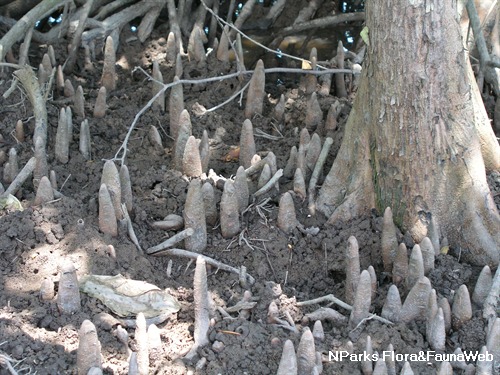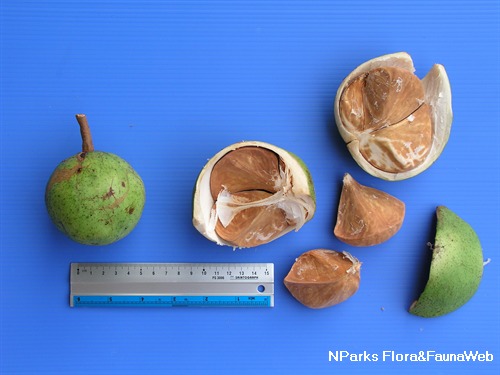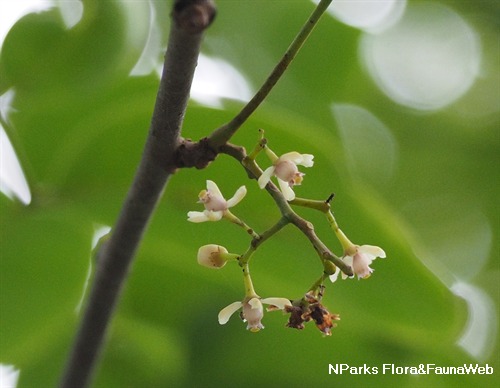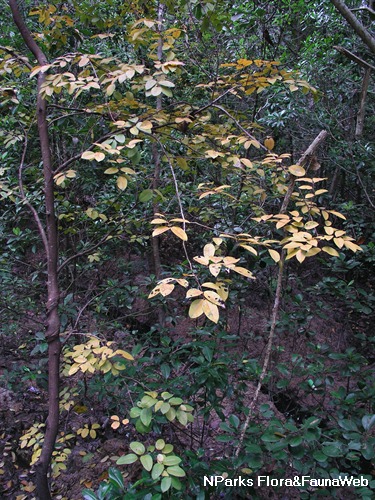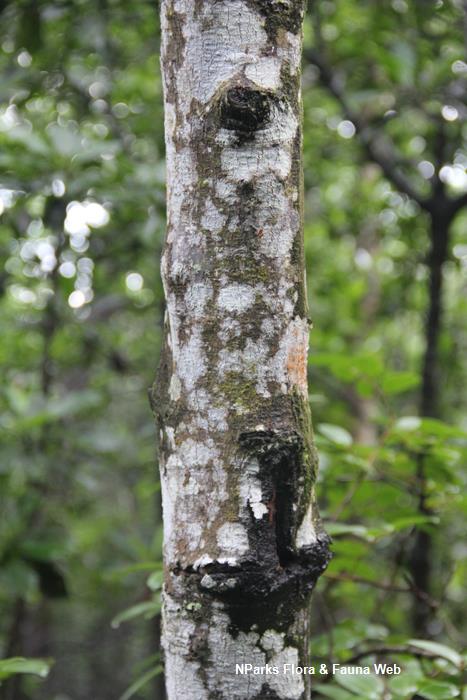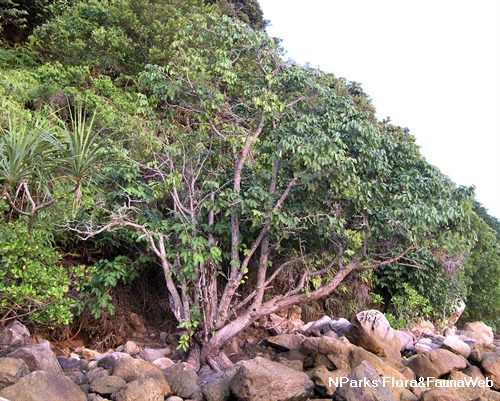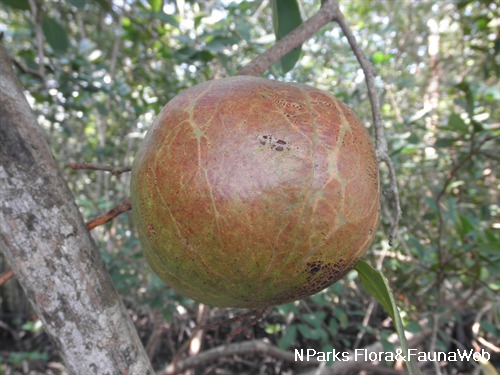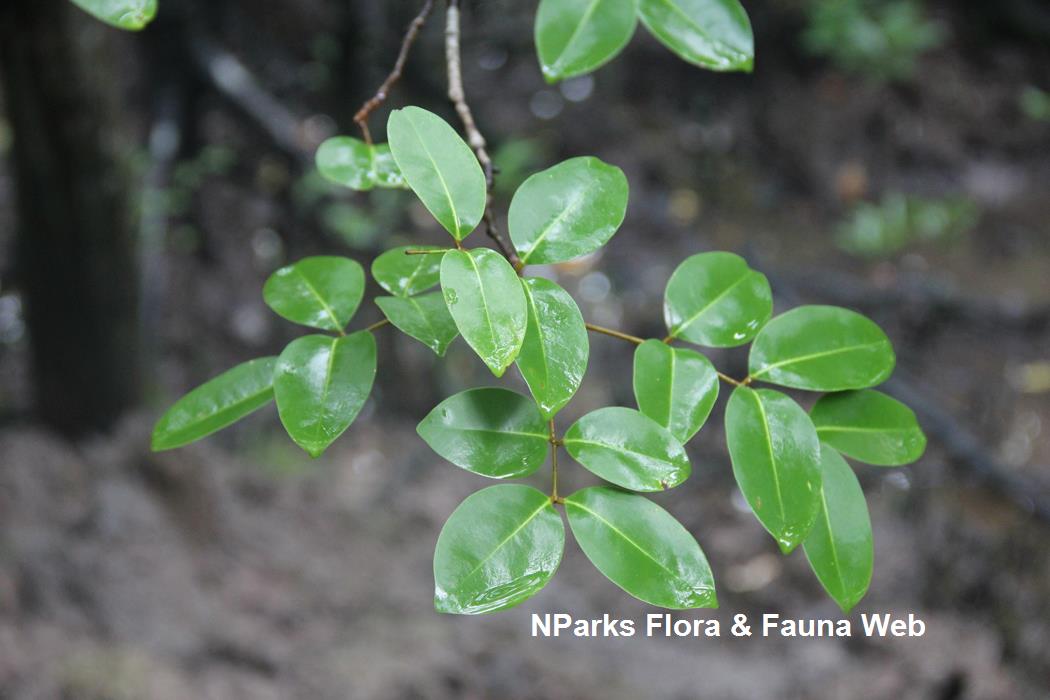
Back
Xylocarpus moluccensis (Lam.) M.Roem.
| Family Name: | Meliaceae |
| Synonyms: | Carapa borneensis, Carapa mekongensis, Carapa moluccensis, Carapa obovata, Xylocarpus australiasicus, Xylocarpus gangeticus, Xylocarpus mekongensis, Xylocarpus parvifolius |
| Common Name: | Nyireh batu |
Name
Classifications and Characteristics
| Plant Division | Angiosperms (Flowering Seed Plants) |
|---|---|
| Plant Growth Form | Tree (Medium (16m-30m), Small (6m-15m)) |
| Lifespan (in Singapore) | Perennial |
| Mode of Nutrition | Autotrophic |
Biogeography
| Native Distribution | Tropical Asia, India, Southeast Asia, including Singapore, northern Australia and Papua New Guinea |
|---|---|
| Native Habitat | Shoreline (Mangrove Forest) |
| Preferred Climate Zone | Tropical, Sub-Tropical / Monsoonal |
| Local Conservation Status | Native to Singapore (Endangered (EN)) |
Description and Ethnobotany
| Growth Form | Medium to large-sized tree, measuring up to 20 - 30 m tall, usually has a sparse canopy |
|---|---|
| Trunk | Trunk diameter measuring up to 70 - 200 cm, deeply fissured surface. |
| Roots | Has pointed, conical-shaped pneumatophores at the base of the trunk. |
| Foliage | Leaves spirally arranged, usually 2 - 3 leaflets, each leaflet measuring 4 - 12 by 2 - 6.5 cm. Leaflets are paired, oval to heart or egg-shaped, leathery and with a broadly rounded to sharply tapered base. Leaflet stalk measure 1 - 3 mm long. |
| Flowers | Occur in clusters located in the axils, flower clusters are 6 - 18.5 cm long and with a 2 - 10 mm long stalk. Calyx is flat, deeply 4-lobed, lobes measuring 1 - 1.7 mm long; calyx lobes are rounded, white and about 1.5 mm long. Flower consist of 4 petals, yellowish and oblong to egg-shaped, measuring 2 - 3 by 3.5 - 4 mm long; 8 stamens and a 2 - 2.5 mm long style. |
| Fruit | Broadly ellipsoid greenish-brown fruit, measuring 8 - 11 cm in diameter, usually has 5 - 10 brown seeds measuring 4 - 6.5 cm long. |
| Habitat | Occurs in tidal forests, banks of tidal creeks, along open shores and along coastal fish ponds. |
| Etymology | Xylocarpus in Latin means "woody fruit", moluccensis refers to the Moluccas region where this species is commonly found. |
| Ethnobotanical Uses | Medicinal: Seeds are used as medicine for stomachaches and bark tannin is used as medicine to treat intestinal problems. Timber & Products: Wood is used to construct houses, boats, small tools and also as firewood. Bark tannin is used to treat fishing nets. |
Landscaping Features
| Desirable Plant Features | Ornamental Flowers |
|---|---|
| Landscape Uses | Coastal, Riverine |
Fauna, Pollination and Dispersal
| Seed or Spore Dispersal | Abiotic |
|---|
Plant Care and Propagation
| Light Preference | Full Sun |
|---|---|
| Water Preference | Lots of Water |
| Plant Growth Rate | Moderate |
| Rootzone Tolerance | Waterlogged Soils, Saline Soils / Salt Spray |
| Pest(s) | Vertebrates (Herbivores) |
| Propagation Method | Seed |
Foliar
| Foliage Retention | Deciduous |
|---|---|
| Mature Foliage Colour(s) | Green |
| Foliar Type | Compound |
| Foliar Arrangement Along Stem | Opposite |
| Foliar Attachment to Stem | Petiolate |
| Foliar Shape(s) | Non-Palm Foliage (Oval) |
| Foliar Venation | Pinnate / Net |
| Foliar Margin | Entire |
Non - Foliar and Storage
| Mature Bark Texture | Fissured |
|---|
Floral (Angiosperm)
| Flower & Plant Sexuality | Bisexual Flowers |
| Flower Colour(s) | Cream / Off-White |
|---|---|
| Flower Grouping | Cluster / Inflorescence |
| Flower Location | Axillary |
Fruit, Seed and Spore
| Mature Fruit Colour(s) | Green |
|---|---|
| Fruit Classification | Simple Fruit |
| Mature Seed Colour(s) | Brown |
| Seed Quantity Per Fruit | Moderate (6-10) |
Image Repository
Others
| Master ID | 1917 |
|---|---|
| Species ID | 3209 |
| Flora Disclaimer | The information in this website has been compiled from reliable sources, such as reference works on medicinal plants. It is not a substitute for medical advice or treatment and NParks does not purport to provide any medical advice. Readers should always consult his/her physician before using or consuming a plant for medicinal purposes. |

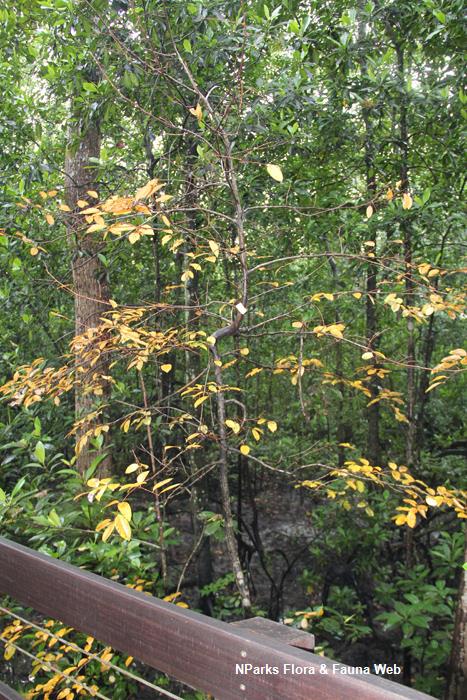
-(4).jpg)
-(6).jpg)
